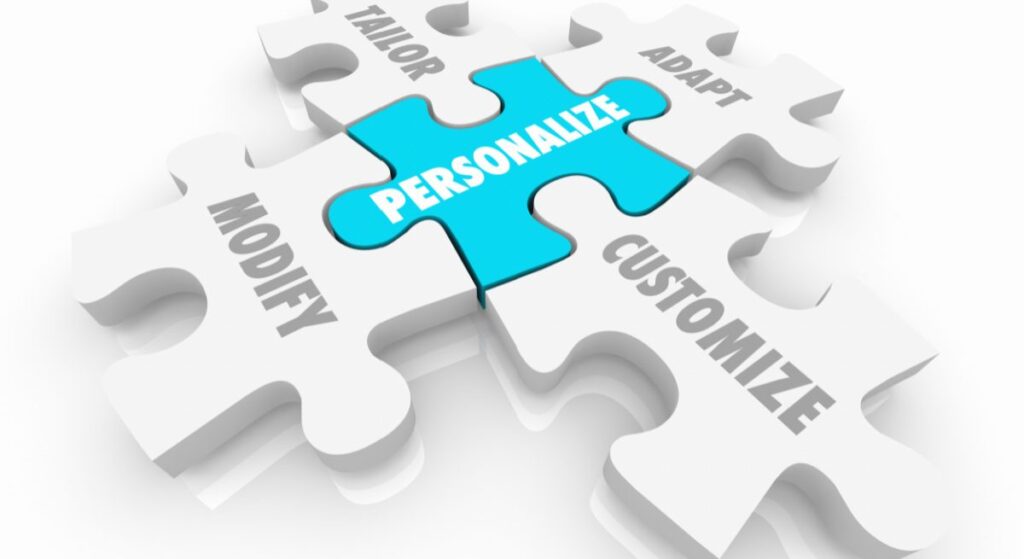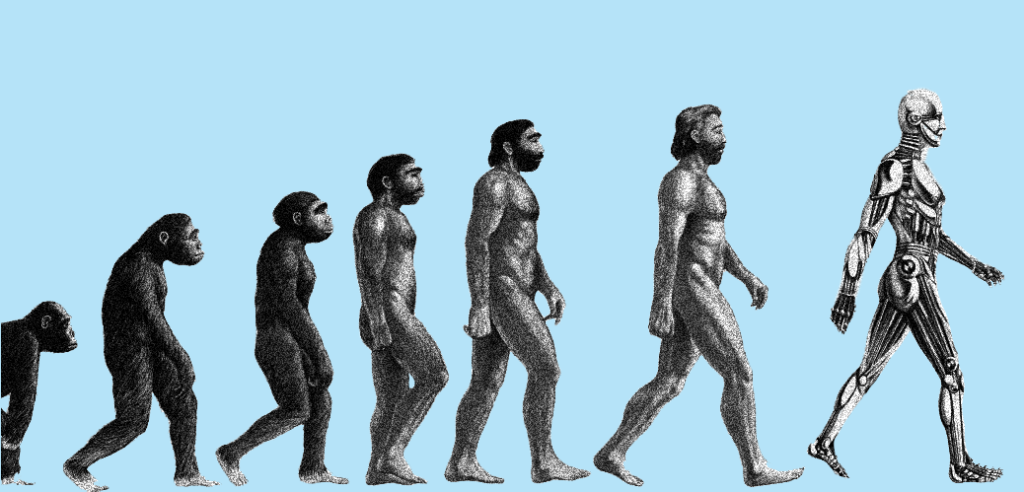As the software-as-a-service (SaaS) landscape experiences exponential growth, the industry stands on the brink of a transformative era powered by artificial intelligence and machine learning. The increasing demand for personalized experiences, the evolution of AI in marketing, and the rise of voice and vision technology are reshaping the future of SaaS. However, with this rapid technological evolution, adherence to changing regulatory landscapes is paramount. The road to 2024 heralds exciting, yet challenging times for SaaS companies. Will they navigate this journey successfully? Only time will tell.

The Thriving SaaS Landscape
The software-as-a-service (SaaS) industry has experienced a remarkable surge in the past decade. Experts anticipate the total market value to hit $220 billion by 2024, almost twice the value in 2020. Several intertwined elements are driving this growth.
Firstly, companies of all sizes are shifting their IT infrastructure to the cloud for its adaptability, scalability, and cost-effectiveness. SaaS solutions offer access from any location while cutting costs related to on-site hardware and software. The COVID-19 pandemic has also sped up SaaS adoption as businesses adjusted to remote work.
Moreover, SaaS providers employ subscription models, generating consistent revenue streams. The pay-as-you-go method also reduces entry obstacles for customers. Investors have taken note, fueling funding rounds and acquisitions.
However, escalating competition has heightened customer expectations. Providers must offer personalized experiences and constantly improve their services to retain users. This increasing pressure pushes SaaS businesses to utilize emerging technologies like AI and machine learning. Those who successfully integrate these advancements into their products and marketing strategies will secure significant benefits.
With careful planning, SaaS companies can ride the industry’s upward trend while preparing for sustained dominance. But falling behind on technology risks losing market share to more agile innovators. By taking action now, businesses can harness AI to enhance personalization and drive sustainable growth through 2024 and beyond.
The Thriving SaaS Industry
Software-as-a-service (SaaS) has swiftly become the go-to model for delivering business software. Instead of installing applications on individual computers, SaaS provides users with the ability to access software over the internet through a subscription. This method promotes scalability, flexibility, and convenience.
The growth of the SaaS industry has been nothing less than extraordinary. Experts anticipate it will soon surpass $220 billion in annual revenue. What’s driving this momentum? SaaS addresses critical business needs. It enables companies to bypass hefty upfront investments in on-premise software and hardware, offering instead a pay-as-you-go pricing model that aligns with usage. This allows organizations to adapt flexibly as their needs evolve.
For users, SaaS removes the hassle of software updates and maintenance. The cloud-based model provides access anytime, anywhere, from any device. This meets the demands of increasingly dispersed, mobile workforces. SaaS also promotes collaboration through shared data and workflows.
For software vendors, SaaS facilitates faster deployment cycles. Instead of lengthy on-premise installations, new features can be rolled out instantly. This encourages more rapid iteration. The subscription model also ensures more consistent revenue streams.
With the global expansion of 5G networks, SaaS adoption is set to speed up even more. 5G offers ultra-low latency and enhanced capacity, supporting rich SaaS application functionality, even for data-heavy programs that rely on graphics and visualization.

Get more AI + Marketing news
Admittedly, SaaS does have some limitations around customization. Also, some industries still have concerns about data security and privacy. However, vendors are continually refining their capabilities to address these issues.
Overall, the growth path for SaaS looks strong. By 2025, some experts predict SaaS will make up over 25% of all enterprise software spending. As technology becomes more ingrained in business operations, SaaS provides the agility and accessibility needed to keep up with the pace. It fosters innovation not just in software development, but also in how organizations structure workflows to gain a competitive edge. With smart integration and change management, businesses can maximize SaaS capabilities to set themselves apart. The next wave of SaaS is likely to bring smarter, more integrated suites focused on entire workflows rather than individual apps.
Customers Yearn for Personalization

As we stride towards 2024, the demand for personalized experiences from software users is on the rise. Generic, one-size-fits-all solutions are becoming obsolete in a saturated market where businesses have a plethora of choices. To distinguish themselves and foster loyalty, SaaS companies need to harness the power of artificial intelligence to provide highly customized products and communication.
Modern SaaS users anticipate their tools to instinctively comprehend their needs and usage patterns. For instance, project management platforms can utilize machine learning to tailor dashboards, workflows, and notifications for each customer based on their unique objectives and behaviors. Customer support software can employ natural language processing to scrutinize help desk tickets and self-serve knowledge bases, then automatically propose pertinent articles and product adjustments for each account.
The potential for personalization facilitated by AI is boundless, restricted only by the depth and quality of customer data. As SaaS businesses gather more behavioral insights and feedback through surveys, support conversations, and product analytics, their AI systems can continually refine and customize experiences. We will witness AI morphing SaaS products from static, generic offerings into adaptive solutions that evolve with each customer, ultimately leading to increased satisfaction and retention.
By 2024, providing personalized products will transition from a competitive edge to a fundamental expectation. SaaS companies that neglect to utilize their wealth of customer data and leverage AI will rapidly lag behind competitors who are delivering customized experiences. Business leaders must begin establishing the technical groundwork today to comprehend buyers on an individual level and cater to their unique needs. With AI as a partner, SaaS marketers can establish deeper emotional bonds with each customer – the cornerstone of unforgettable, cherished brands.
AI’s Evolution in Marketing

Artificial intelligence and machine learning are evolving, opening up fresh avenues for marketing automation and analytics. Instead of relying on basic rules-based systems, AI technologies can sift through data, spot patterns, and make predictions. This progression empowers SaaS marketers to glean deeper insights and craft more personalized, pertinent customer experiences.
One significant stride forward is in the realm of predictive lead scoring. With the help of machine learning, lead scoring models can now incorporate behavioral signals and social data to determine in real time which prospects are ready for sales. This means sales teams can avoid wasting time on cold leads. Marketing budgets also become more efficient, focusing only on warmer leads with a higher likelihood of conversion.
Another leap forward is in the field of personalization. AI algorithms can identify which content topics, offers, or journeys are most appealing to each customer. They then automatically customize emails, web experiences, and ad campaigns to match individual interests and requirements. This level of personalization aids in boosting conversion rates and enhancing customer lifetime value.
Looking ahead, generative AI could have a substantial influence on marketing creativity. By analyzing heaps of data, advanced generative systems can create original long-form content, images, audio, and video to captivate customers. Instead of replacing humans, these tools enhance marketers’ capacity to produce high-quality, tailored assets on a large scale.
As AI capabilities become more potent, they will be essential for SaaS organizations. To capitalize on these advancements and stay competitive in 2024, it’s crucial to invest in integrated marketing automation and analytics platforms. With more intelligent tools, SaaS marketers can transform data into insights, engagement, and growth.
Leveraging Voice and Vision
In the year 2024, the landscape of SaaS marketing will be significantly transformed by voice-based interactions and computer vision technology. Companies that thoughtfully and strategically utilize these innovations will be able to gain a competitive edge.
Voice search offers a new way to engage with customers. By 2024, it is predicted that over half of all searches may be conducted via voice commands rather than text, changing the way users find and evaluate SaaS solutions. Brands that optimize for voice search early on have the potential to attract more organic traffic.
SaaS marketers should prioritize fast-loading websites and conversational content to make the most of this trend. Blog posts and other assets should be written in natural language, answer common questions, and explain key features in a helpful and friendly tone. It’s also important to ensure that platforms can interpret pages correctly by reviewing structured data markup. Consider adopting conversational interfaces like chatbots to handle basic customer inquiries.
Make your paid search and advertising copy more conversational. Use natural phrasing when bidding on keywords and experiment with different ad formats, such as explainer videos and podcast ads, that are suitable for voice-activated purchasing. Monitor analytics to see if visitor interactions vary depending on how they arrived at the site.
On the other hand, computer vision offers the possibility of advanced personalization. SaaS platforms can potentially track visual engagement metrics, customize on-site experiences, and target visual ad formats.
For instance, computer vision could measure where users look on a page and how long they stay on or return to specific sections. This information could assist SaaS marketers in redesigning site navigation, highlighting popular features, and testing different layouts. Companies could also personalize on-site promotions or in-product suggestions based on individual interests identified through vision algorithms.
SaaS brands can also use computer vision ad targeting to deliver creative content to specific audiences based on visual cues. Expect to see more platforms utilizing this technology shortly.
However, these promising innovations also come with potential risks related to data privacy and algorithmic bias. They necessitate careful implementation and governance. SaaS companies should be transparent about their use of vision algorithms and ensure appropriate consent, access controls, and data security safeguards are in place. Teams should be vigilant for unintended exclusion or discrimination if they rely solely on machine-driven personalization. Guidelines for responsible usage will likely become more formalized in the coming years.
By 2024, voice search and computer vision are expected to enable smarter, more intuitive SaaS experiences. However, these tools must be used judiciously to build customer trust. SaaS brands that can effectively utilize voice and vision will gain lasting competitive advantages. Those who use them recklessly risk damaging their reputation. By preparing now, marketing leaders can responsibly harness these innovations to better serve their customers.
Navigating the Regulatory Landscape for 2024 AI Marketing Trends
As the world of artificial intelligence and machine learning evolves at a breakneck pace, so too do the regulations that govern them. By 2024, SaaS companies that use AI for marketing will need to deftly navigate a changing regulatory landscape that encompasses data privacy, transparency, and ethics.
The EU led the charge in consumer data regulations with the introduction of GDPR in 2018. Now, countries across the globe are implementing their versions of these regulations to protect the digital information of individuals. These regulations empower users with more control over their data through consent requirements and access rights. However, ambiguous terms like “personal data” can lead to confusion for SaaS marketers when it comes to compliance. Moreover, intricate opt-in and deletion request processes can put a strain on resources. By 2024, the fragmentation of global regulations could pose a significant challenge to efficient AI marketing strategies.

Moreover, ethical AI practices are coming under increased scrutiny. Recently, some AI-enabled marketing campaigns have faced backlash for exploiting personal data or enabling discrimination through biased systems. In response, governments are introducing guidelines and restrictions regarding the ethical development, testing, and monitoring of AI technology. By 2024, SaaS companies will need to establish robust AI ethics review boards, bias testing, and training data oversight to reassure stakeholders that their systems operate fairly.
Navigating this intricate, ever-changing regulatory environment in 2024 and beyond will challenge SaaS marketers to balance compliance with innovation. Lean, agile teams should keep an eye on regulatory changes, liaise with legal experts, and participate in policy discussions. SaaS leaders should also establish frameworks to assess the impact of new regulations on key metrics like customer acquisition costs, lifetime value, and churn rate. Furthermore, companies should design machine learning pipelines to facilitate transparency, ethics checks, and compliance audits. Investing in responsible AI marketing governance can better position SaaS businesses to earn trust and sustain growth into the future while avoiding potentially costly missteps.
In conclusion, by raising awareness and preparing diligently, SaaS companies can adopt AI marketing strategies that will allow them to thrive in 2024 while operating safely, ethically, and legally. The regulatory climate will continue to evolve, but proactive self-regulation and cooperation can allow both technological progress and consumer protection to flourish together.
As the SaaS landscape continues to evolve, attention to personalization, leveraging AI in marketing, and mindful navigation of regulatory shifts will equip businesses to thrive. With a well-grounded strategy, companies can harness these advancements, contributing to a future of innovation, growth, and customer satisfaction.
Want to keep up-to-date on all the latest marketing gossip and trends tune into our podcast Marketers Talking Marketing.



